Flash Floods Strand SoCal Motorists… Sign of Wet Winter to Come
Southern California motorists were left stranded on highways Thursday, as drenching rain and golf ball-sized hail bore down on the area, causing dangerous flash flooding.
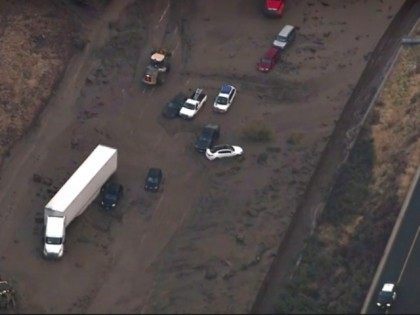
Southern California motorists were left stranded on highways Thursday, as drenching rain and golf ball-sized hail bore down on the area, causing dangerous flash flooding.

Bill Patzert, climatologist at NASA’s Jet Propulsion Laboratory in Flintridge called this year’s Pacific warming the Godzilla of all El Niños in August, but it just got much bigger.
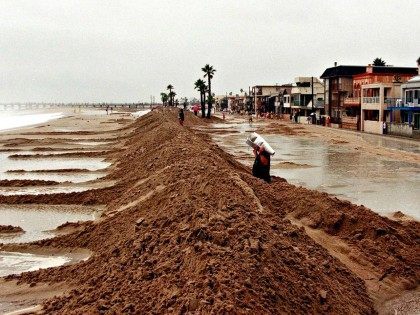
Twenty years ago, the volatile Persian Gulf supplied 35 percent of U.S. oil consumption and the left’s so-called experts were screaming that the world had hit the “peak oil” extraction point, after which supply would soon dwindle rapidly.
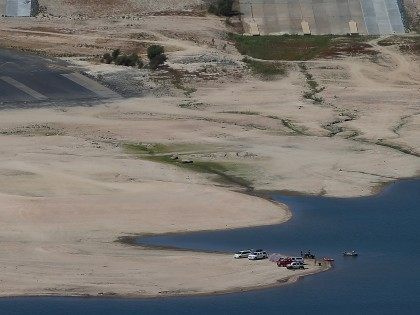
California’s Walker Lake suddenly and unexpectedly dried up Friday, killing thousands of fish as the state struggles through a fourth year of record drought.
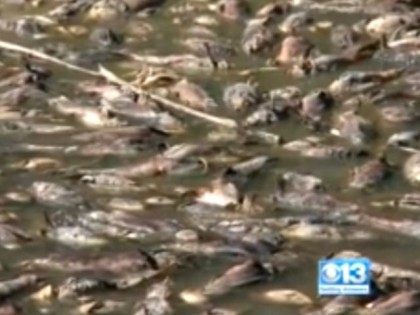
China’s President Xi Jinping will sign an agreement to open up China’s rice market to U.S. exports as part of his economic charm offensive this week, after signing a $38 billion aircraft deal with Boeing in Seattle.
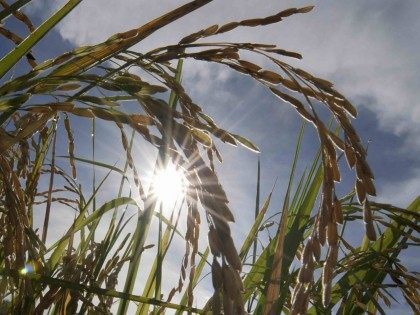
Los Angeles saw 2.39 inches of rain on Tuesday, making it the wettest calendar day for the city in more than four years, according to the Associated Press.

California picked up an average of about an inch of rain, with some mountain areas collecting 2 inches, as hurricane Linda brought the first of what is expected to be a “tropical train” of El Niño generated and other storms to the West Coast.

Growing El Niño May Launch Huge Latino Migration to U.S.

The El Niño currently forming in the Pacific Ocean could potentially be the strongest weather pattern of its kind since 1950, the United Nations’ World Meteorological Organization (WMO) predicted Tuesday.
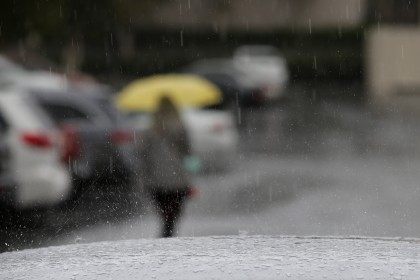
The raging El Niño Southern Oscillation, a band of warm ocean water in the central and east-central equatorial Pacific, is about to cause droughts in southern Asia–and to bring enough rain to boost California almond production after years of drought-induced decline.

While climatologists keep an eye on what could be an historic El Niño on the West Coast this winter, another, less-well-known weather pattern currently developing in the Pacific Ocean could end California’s drought and then some–leaving the Golden State up to its ears in rainfall for up to a decade.

Californians cut water use by 27.3 percent in June, the State Water Resources Control Board announced Thursday, good enough to exceed Gov. Jerry Brown’s executive order earlier this year for a 25 percent statewide water reduction.
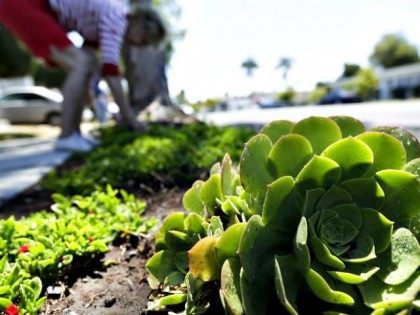
An El Niño forming off of the Pacific Coast could morph into the largest weather event of its kind in recorded history.
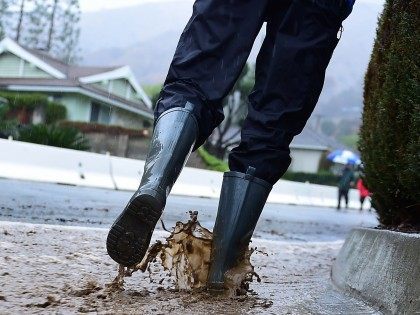
A new aerial video taken by the California Department of Water Resources shows just how severely the state’s record four-year drought has impacted water levels at key reservoirs.
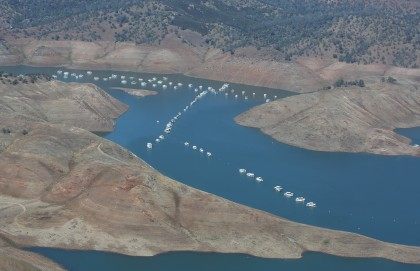
With Los Angeles receiving small amounts of rain on three separate days last week, red crabs washing ashore in Orange County, and three simultaneous typhoons in the western Pacific Ocean in early July, El Niño (“little boy”) is beginning to crank up

With Tuna Crabs overrunning San Diego beaches in the first signs that an El Niño weather condition is bearing down on the Western United States, the Obama Administration raised this year’s federal emergency drought funding for the seven Western states to $300 million. After limited aid during two years of inaction, the Obama Administration is going all-in for drought relief, just as El Niño’s torrential rains will soon arrive.

California’s record drought took a stunning turn for the worse last week: on Thursday, the snowpack in the Sierra Nevada mountains officially disappeared.
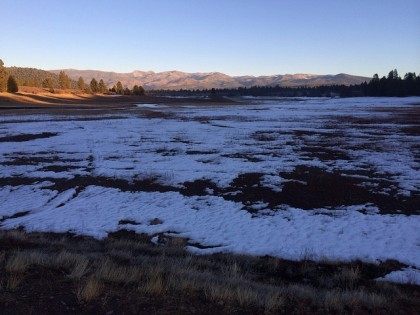
With temperatures dropping into the high teens, and about 7 inches of snow falling for the next three days, Mammoth Mountain is on track to get its most snow since December 2014. The unseasonal snowfall in the Sierras will not break the drought, but the National Climate Prediction Center’s decision to raise the probability of El Niño to 90 percent has insurance companies scrambling to model losses they expect to suffer from El Niño flood damage.
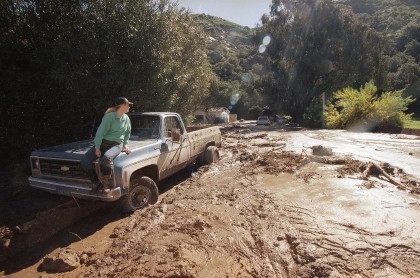
With all the upbeat predictions, it might be easy for Californians to think the four-year-long drought is finally coming to an end. But Bob Yamada, water resources manager at the San Diego County Water Authority, says Californians should keep the champagne corked, at least in the short term.

The National Climate Prediction Center has raised the probability of an El Niño in the Northern Hemisphere lasting through this summer to 90 percent, and added that there is a a greater than 80 percent probability it will last through all of 2015.

The highly respected Colorado State University forecast for the coming season looks for only 7 named tropical storms and only 3 hurricanes, about 40% less than average. Coupled with the expectations of global cooler weather and more precipitation from El Niño, climate change “scientific experts” may need to develop more new models.

Rain and snow hit Northern California as an unseasonably cold spring storm pushed south through parts of Northern California on Thursday, bringing a welcome break in the drought.

On April 9, the National Oceanic and Atmospheric Administration (NOAA) officially declared a strong El Niño advisory reflecting substantially above-average surface sea temperatures forming across the equatorial Pacific. This means that there is a 60 to 70 percent probability that America could experience a monster winter like the El Niño that hit in 1997-1998, causing torrential rains in the Southeast, ice storms in the Northeast, tornadoes in Florida, and mass flooding in California.
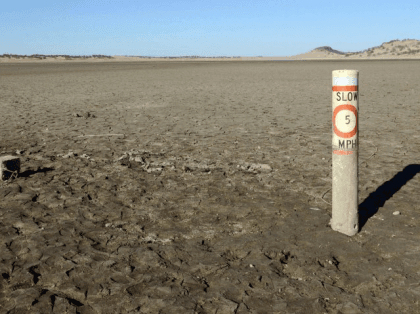
California’s December rainstorms are long forgotten. Two separate federal agencies predicted this weekend that the three-year-old drought plaguing the Golden State will continue, at least across most of the state.
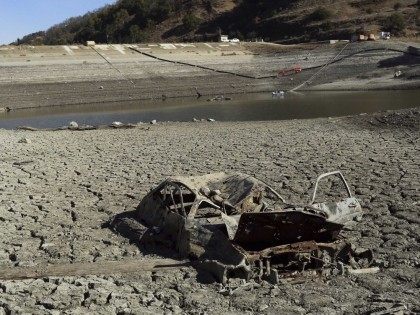
Although Northern California is at 140% average rainfall so far this year, the state is still in the equivalent of one of its worst droughts. The National Oceanic and Atmospheric Administration (NOAA) recently downgraded its estimated probability of El Niño torrential rains developing this winter to approximately 65%.
